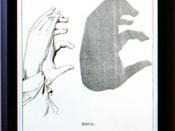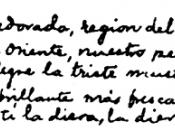Prayer of Steel
Carl Sandburg
(1878-1967)
Lay me on an anvil, O God
Beat me and hammer me into a crowbar.
Let me pry loose old walls.
Let me lift and loosen old foundations
Lay me on an anvil, Oh God.
Beat me and hammer me into a steel spike.
Drive me into the girders that hold a skyscraper together.
Take red-hot rivets and fasten me into the central girders.
Let me be the great nail holding a skyscraper together through blue nights into white stars.
A formalist reading of the poem
"Prayer of Steel" is a short poem composed of 9 lines, the ninth being the longest. The cohesive devices in the poem will be analyzed on three levels: lexical, grammatical, and phonological. The analysis will be made first of the individual stanzas, then of the overall structure of the whole poem. Leech's concept of cohesion will be referred to where necessary.
General observations
The title "Prayers of Steel" is an example of "foregrounding": steel is a kind of metal, thus it is inanimate and cannot perform the action of saying prayers, an action performed only by a human being. Obviously, the poet has deviated from the generally observed rulles of the language, and it is significant that these are prayers of steel, not of rubber. The inference is that whatever the speaker wishes to accomplish will require a great deal of strength and determination. From the title, "foregrounding" then extends into the poem so that we have "cohesion of foregrounding", in which the foregrounded features identified in isolation are related to one another, and to the poem as a whole, as can be observed below.
Cohesion in the individual stanzas
Stanza 1
Lexical cohesion: First we observe that among all the images used in the first stanza, there...


